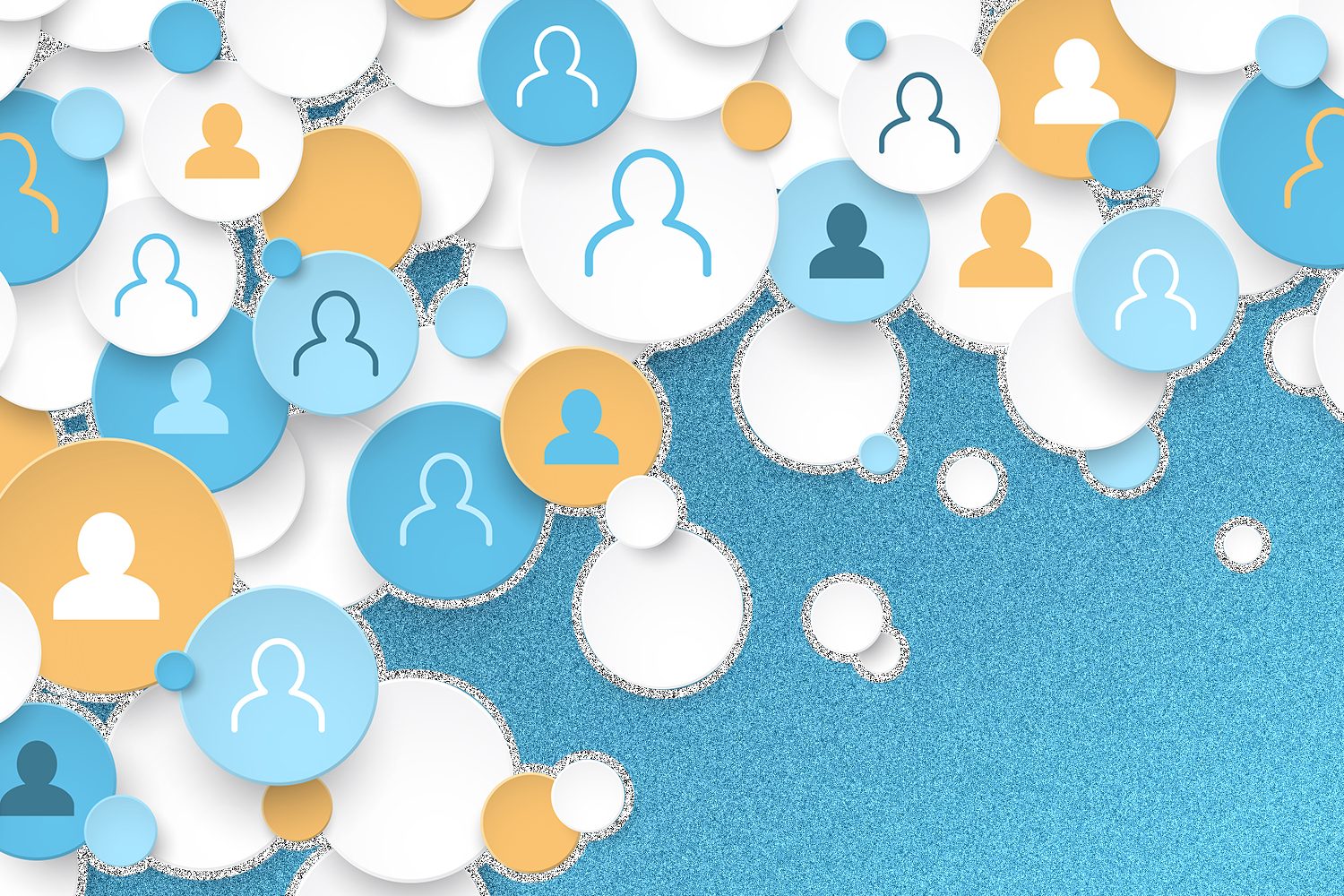As a business leader, diversity, equity, and inclusion (DEI) are likely key priorities for you and your company. You want to walk the walk. But first, new DEI leaders and allies must talk the talk. Learn the terms that frame important conversations about diversity and inclusion at your organization.
Even veteran diversity leaders may be wondering, what does reverse mentorship mean? Or, what’s the difference between inclusion and belonging?
Senior Executive Media’s glossary reflects conversations with corporate diversity leaders and DEI consultants, as well as a variety of published DEI thought leadership. Consider and discuss with senior leadership what individual DEI terms mean in the context of your organization. Developing a shared vision can help your team achieve long-term DEI progress and an equitable work environment.
Did we miss any terms? Quibble with any definitions here? Send us an email to help us build our glossary and keep our definitions up-to-date.
Glossary of Terms
Ableism — Discrimination and prejudice against people with disabilities. Ableism in the workplace can show up in the use of harmful language surrounding disabilities, discriminatory practices, or lack of accommodations for employees with disabilities. For example, some companies don’t provide parking spaces that accommodate people with disabilities.
ADA — Americans with Disabilities Act of 1990. This law prohibits discrimination against people with disabilities. Under Title I of the ADA, employers are prohibited from discriminating against individuals with disabilities in the job application, hiring, or job training process. The EEOC enforces Title I.
Affinity groups — See our definition of employee resource groups.
Ageism — Prejudice or stereotyping of individuals based on their age. Ageism in the workplace occurs when employees are treated differently because of their age. That might involve discriminatory hiring practices toward older workers or prejudiced comments against recent graduates.
Allyship — Actively supporting people of marginalized identities against acts of oppression, even if you are not a part of the group itself. Allyship applied in the workplace, for example, would be White employees supporting Black employees amid protests against police brutality. Other examples include advocacy for closing wage gaps or hosting listening sessions for employees from the LGBTQ community, even if you are straight.
Anti-racism — Actively opposing discrimination and prejudice based on race by advocating for changes in political, economic, and social life. Anti-racism at work involves identifying and championing change when discrimination arises. Anti-racism can also involve re-evaluating your biases and learning more about the challenges that marginalized groups face — both at work and outside of the office.
Belonging — The feeling of security, acceptance, and support that an individual feels at their company. Belonging in the workplace is achieved when people with underrepresented identities feel like they are accepted and supported in their organization. An employee’s racial background, sexuality, or disability are a part of who they are. Belonging means your employee feels accepted as a person — not in spite of their identities
Bias — A prejudice toward an idea, person, or group. Bias in the workplace often involves favoring one group or people over others. Bias can often be unconscious. For example, a board may lack diversity when a founder subconsciously brings on advisors from the same background as themselves. In a historic example, one study found that people with distinctively Black names were called back less frequently for job interviews than those with traditionally White-sounding names. Anti-bias training can help your team identify unconscious bias and make organizational changes.
BIPOC — An acronym for Black, Indigenous, and people of color. BIPOC is used to acknowledge that not all people of color face the same types of barriers. Often Black and Indigenous people are impacted particularly severely by systemic racism.
Boardroom diversity — Having a range of different voices and identities on the executive board of a company. Having a diverse board has benefits for your company. Cloverpop, an online decision-making platform, ran a study assessing the decision-making of teams versus individuals. Teams that were geographically and racially diverse with members of all genders and from multiple generations performed the best.
Campus diversity — The variety of differences in gender, race, religion, ethnicity, sexual orientation, and other characteristics at a corporate campus.
Chief diversity officer — An executive who leads a company’s diversity and inclusion initiatives. The exact responsibilities of diversity officers range widely. However, most of these leaders set diversity, equity, and inclusion policies. Other common responsibilities include managing datasets that track DEI goals, as well as partnering with the company’s communications department to share this information within the company and externally.
Cisgender — Gender identity, expression, or behavior that aligns with a person’s assigned sex at birth. For example, someone who was born biologically female and identifies as a woman would be cis-gendered. A person who identifies as a gender different than their sex at birth would be transgender. Make sure your benefits package is inclusive of the health needs your transgender employees may have.
Classism — Discriminatory treatment of individuals because of their socioeconomic background. Workplace classism can show up when employees from wealthy families bond over expensive luxuries that employees from underserved communities did not have access to. This may also involve recruiting interns and employees only from certain schools, without building a pipeline for candidates from community colleges, public universities, or other educational backgrounds.
Corporate culture — The behaviors, beliefs, and expectations that comprise a company’s workplace atmosphere. Corporate culture is embedded in a company’s dress code, work hours, events, diversity, office structure, leadership involvement, external communications, etc.
Cultural sensitivity training — This training seeks to help employees understand and appreciate differences between cultures. There are nuances in communication styles, how actions are interpreted, etiquette, and values based on culture. Cultural sensitivity training can enrich your interactions with your co-workers from different backgrounds and your business partners on a global scale.
Diverse candidate pipeline — This refers to the number of candidates from underrepresented groups that are in the running for an open role. This includes the process of recruiting, interviewing, and hiring candidates of different identities. Companies can help create a diverse hiring pipeline through recruiting efforts at historically Black colleges, apprenticeship programs in low-income areas, recruiting at community colleges, supporting organizations like Girls Who Code and directly reaching out to candidates from different backgrounds.
Diversity — The variety of differences in gender, race, religion, ethnicity, sexual orientation, and other characteristics. Diversity in the workplace (or workplace diversity) involves people from multiple backgrounds and identities working together at the same company. Diversity is often described as a mosaic: Each employee and all of their identities create one integral part of the overall artwork.
Diversity, equity, and inclusion (DEI or DE&I) — A set of policies, practices, and initiatives intended to create a more diverse, equitable, and inclusive workplace. This is sometimes referred to as diversity, equity, inclusion, and belonging (DEIB or DEI&B).
Diversity, equity, and inclusion (DEI) audit — An examination of an organization’s processes, workforce, operations, and policies to determine where an organization stands in terms of diversity, equity, and inclusion. Supplier diversity, the number of incident reports, and workforce diversity are a few of the elements that are often included in an audit.
Diversity, equity, and inclusion (DEI) benchmark — Standard points of reference and data markers for organizations to compare themselves against. For example, some companies use U.S. Census demographic data to evaluate their workforce diversity. In these cases, the racial diversity of the workforce should have the same ratio as its geography. Other companies may look for benchmarks from industry leaders when measuring their DEI progress.
Diversity, equity, and inclusion (DEI) budget — Money allocated to achieving DEI goals. A DEI budget often covers the cost of workshops, training, recruitment of diverse candidates and suppliers, investment in underprivileged communities, holiday celebrations, philanthropy, etc.
Diversity, equity, and inclusion (DEI) scorecard — An evaluative tool that allows organizations to track progress toward goals around diversity, equity, and inclusion. Such tools often include metrics like workforce diversity, retention of people of color, and leadership diversity.
Diversity, equity, and inclusion (DEI) training — A curriculum of DEI workshops and guided, candid conversations that should educate and motivate employees.
EEOC — Equal Employment Opportunity Commission. A U.S. federal agency that administers and enforces civil rights laws in the workplace. The EEOC investigates discrimination complaints.
EEO-1 — Federal Employer Information Report or Standard Form 100. An annual data report that all private sector employers with over 100 employees or federal contractors with 50 or more employees must file with the Equal Employment Opportunity Commission that provides a demographic breakdown of their workforce in a variety of categories, including race and sex.
Employee engagement — How much an employee voluntarily participates in an activity. Strong employee engagement can be very crucial to a DEI initiative’s success.
Employee resource group (ERG) — Employer-sponsored groups that allow employees with common characteristics (race, gender, sexuality, etc.) to connect. Employees can use such groups to embrace their identities, share resources and pursue professional development opportunities. ERGs are also commonly known as affinity groups.
Senior Executive DEI Think Tank is a criteria-based membership community for chief diversity officers and senior-level DEI leaders at large organizations to share difference-making tactics, trade valuable resources, and seek the counsel of experienced peers in a private, confidential setting.
Do you qualify?Equity — Fairness in the access to resources and opportunities. Equity in the workplace ensures a level playing field for all employees. For instance, equity might involve companies providing accommodations to disabled employees or mentorship to underrepresented racial groups, so they can have the same access to promotions as more privileged groups. Think of employees of different heights sitting in a row. Equity is often compared to finding different-sized stools so, when seated, all employees are the same height.
Gender nonconforming — A way of identifying or expressing one’s gender outside of the binary categories of men and women. Some people may consider themselves gender fluid, with gender expression or identity that changes over time. Non-binary people identify as neither men nor women, with identities outside of the gender binary. Some gender non-conforming people may use the pronouns they and them. Others may use multiple pronouns.
Halo effect — When a person’s positive characteristics determine the way we view their other, unrelated traits. For example, a good looking person is also perceived to be kindhearted. It’s important to be aware of the halo effect when interacting with employees or consumers.
Incident report — A report filed with a corporate authority after an employee experiences a discriminatory incident or display of harassment. That may include microaggressions, hate speech, bullying, and other discriminatory treatment. Some companies may have formal processes; others may not. Companies should keep track of the number of incident reports filed. Over time, as your DEI strategy takes root, you will want to see incident reports decrease.
Inclusion — The concept of ensuring individuals of marginalized backgrounds are invited, listened to, and welcomed at an organization. An inclusive workplace welcomes diverse identities and voices throughout the organization. That can involve creating employee resource groups for employees with common identities, running events to celebrate diversity, or creating mentorship opportunities for underrepresented groups.
Intersectionality — How identities can overlap and shape a person’s experience. Intersectionality acknowledges that people have many parts of their identity and belong to many groups at once. Discrimination can present itself differently in these situations. For example, the experience of an employee who is disabled and a woman will be different from an employee who is a woman and not disabled. The experience of a Black non-binary person will be different from someone who is White and non-binary.
Latinx (or Latino) — A term to refer to people of Latin American descent. Recently, experts have debated the use of the term Latinx. Pew research found that only 23% of U.S. adults who self-identify as Hispanic or Latino have heard of the term Latinx. Only 3% use the term Latinx to describe themselves.
LGBTQIA+ — Lesbian, gay, bisexual, transgender, queer, intersex, asexual, and other sexualities and gender expressions outside of heterosexual or cisgender. (“Queer,” once used as a slur, has been reclaimed by members of the LGBTQ community to refer to sexualities outside of heterosexual relationships, as well as expressions of gender outside traditional roles for men and women.)
Marginalization — The minimization of individuals or groups from minority backgrounds and cultures. Employees are marginalized at work if they are offered fewer opportunities because of their identity. This can take the form of being ignored in conversations, overlooked in decision-making, or denied accommodations because of their identity.
Microaggression — A verbal, behavioral, or symbolically insensitive action that communicates harmful attitudes. Microaggressions often target people’s race, sexual preference, disabilities, or gender. Often, microaggressions take the form of subtle statements. For example, a White coworker asks an Asian-American coworker, “Where are you from?” This treats the recipient like an outsider, regardless of if they were born in the U.S.
Racism — Discrimination or prejudice against individuals because of their race. Racism in the workplace can take various forms. For example, many companies have a disproportionate representation of Black Americans in their janitorial staff and none in their C-suite.
Recency bias — A cognitive bias that exaggerates the success of recent events and overshadows preceding events. For example, an employee underperformed for most of the year, but right before a review cycle, they complete a big project. Their manager may positively grade their performance because of the success of this recent project. It’s important to be mindful of the recency bias when assessing employees.
Reverse mentorship — When junior employees mentor senior employees. This allows junior employees to pass their generational knowledge and experience onto senior leaders. If lower-level employees are more diverse, senior executives can use their feedback to shape an equitable workplace.
Interested in learning more about mentorship types and other terms in learning and development? Check out our L&D glossary.
Sexism — Discrimination or prejudice against individuals because of their gender. A few common examples are the lack of women in leadership positions, poor maternity leave policies, and lack of gender diversity in certain departments.
Supplier diversity — This ensures that suppliers, vendors, and business partners of an organization come from a variety of backgrounds.
Task force — A group made up of a variety of people from within the organization that is focused on completing a task. Some organizations have a DEI task force or a diversity task force.
White privilege — The benefits and advantages white people receive solely because of their race. For example, many white Americans have greater access to better job opportunities because of historic, socioeconomic disparities.



